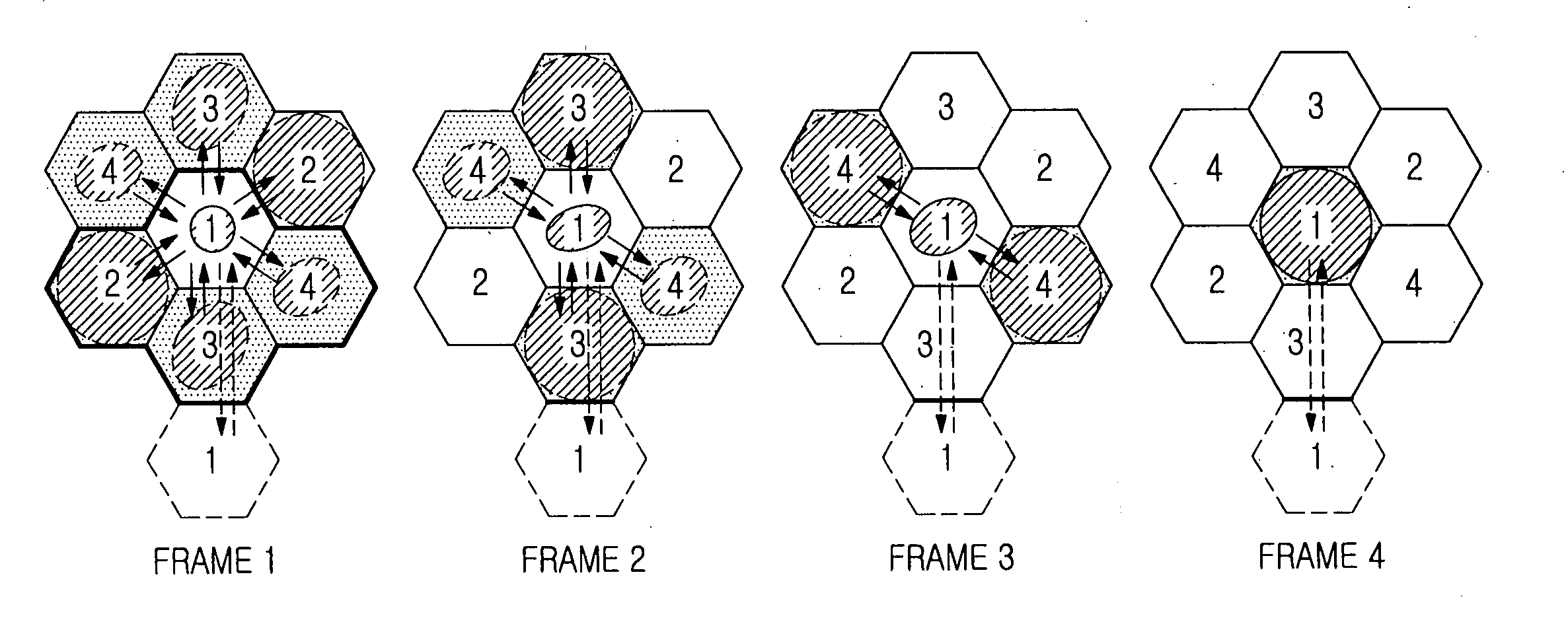Apparatus and method for dynamically allocating resources in a communication system using an orthogonal frequency division multiple access scheme
- Summary
- Abstract
- Description
- Claims
- Application Information
AI Technical Summary
Benefits of technology
Problems solved by technology
Method used
Image
Examples
Embodiment Construction
[0043] Preferred embodiments of the present invention will be described in detail herein below with reference to the accompanying drawings. In the following description, only parts necessary to understand the operation of the present invention will be described, and other parts are omitted for clarity and conciseness.
[0044] The present invention discloses a dynamic resource allocation apparatus and method for minimizing interference between neighbor cells and performing scheduling and subchannel allocation adaptive to a channel state while satisfying fairness between user terminals and Quality of Service (QoS) levels requested by the user terminals in a communication system using an orthogonal frequency division multiple access (OFDMA) scheme (hereinafter, referred to as an OFDMA communication system). That is, the present invention proposes an apparatus and method for maximizing the throughput while allocating subchannels and transmit power such that interference between neighbor ...
PUM
 Login to View More
Login to View More Abstract
Description
Claims
Application Information
 Login to View More
Login to View More - R&D
- Intellectual Property
- Life Sciences
- Materials
- Tech Scout
- Unparalleled Data Quality
- Higher Quality Content
- 60% Fewer Hallucinations
Browse by: Latest US Patents, China's latest patents, Technical Efficacy Thesaurus, Application Domain, Technology Topic, Popular Technical Reports.
© 2025 PatSnap. All rights reserved.Legal|Privacy policy|Modern Slavery Act Transparency Statement|Sitemap|About US| Contact US: help@patsnap.com



